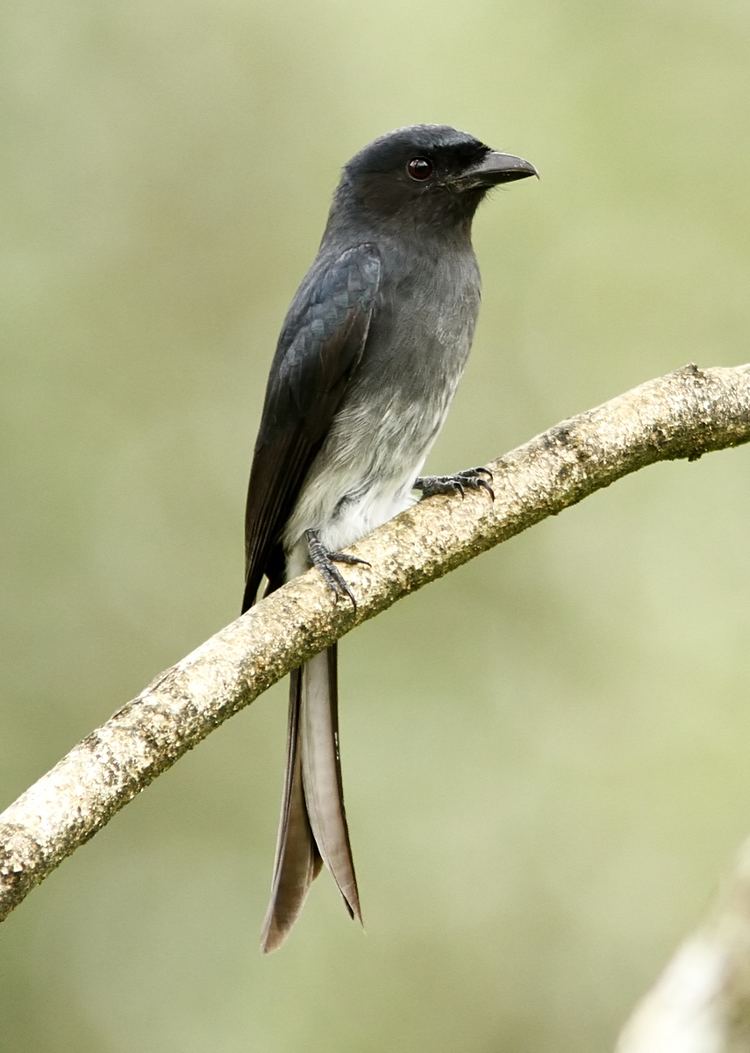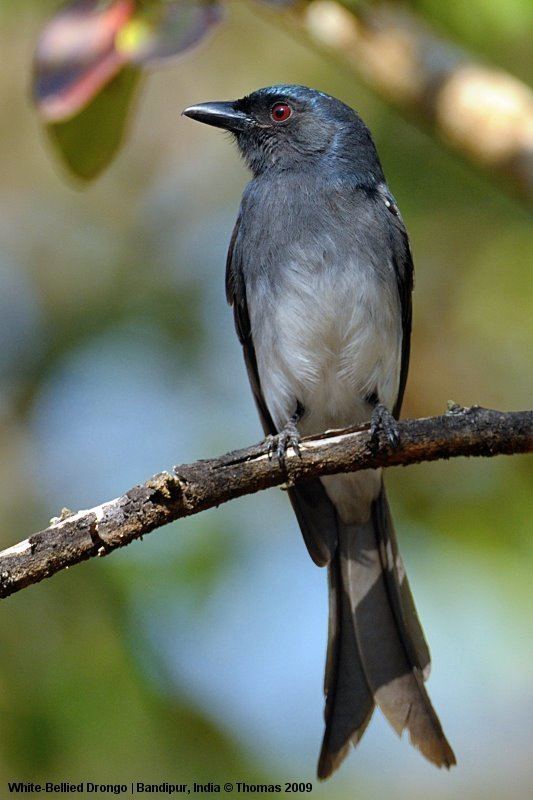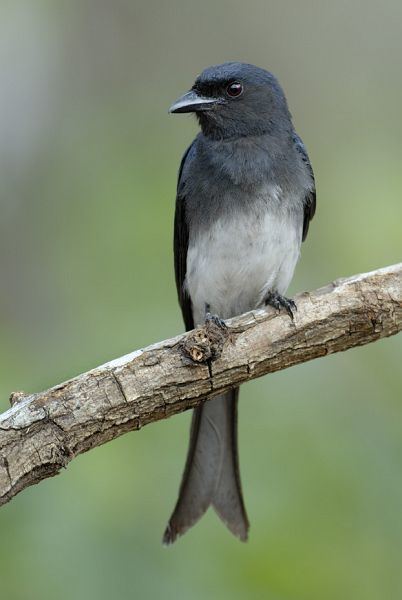Genus Dicrurus Phylum Chordata Rank Species | Family Dicruridae Scientific name Dicrurus caerulescens Higher classification Dicrurus Order Passerine | |
 | ||
Similar Drongo, Bird, White‑browed bulbul, Pale‑billed flowerpecker, Brown‑headed barbet | ||
White bellied drongo
The white-bellied drongo (Dicrurus caerulescens) is a species of drongo found only on the Indian Subcontinent in India, Nepal, Bangladesh and Sri Lanka. Like other members of the family Dicruridae they are insectivorous and is mainly black in colour but with a white belly and vent. Young birds are, however, all black and can be confused with the black drongo, although smaller and more compact in appearance, and the subspecies found in Sri Lanka has white restricted to the vent.
Contents
- White bellied drongo
- White bellied drongo dicrurus caerulescens
- Description
- Distribution and habitat
- Behaviour and ecology
- References

White bellied drongo dicrurus caerulescens
Description

This drongo is black without any glossy on the upperside and greyish on the throat and breast while the belly and vent are entirely white in the Indian form which is the nominate subspecies. The fork of the tail is less deep than in the black drongo which is often seen in the same habitats. Young black drongo's can have a lot of white on the underside but it is usually scaly in appearance. The Sri Lankan forms insularis of the northern dry zone and leucopygialis of the southern wet zone have the white restricted to the vent. Birds that are less than a year old lack the white on the underside but are browner above and greyish below.

The size of the birds varies clinally with northern birds larger. The extent of white on the underside also declines with size although there is a lot of local variation. The Sri Lankan forms leucopygialis and insularis are darker than the Indian form and there is some intergradation within the Sri Lankan forms. The species is believed to be closely related to Dicrurus leucophaeus but has not be confirmed with molecular sequence studies.
Distribution and habitat

The white-bellied drongo is a resident breeder in India and Sri Lanka. This species is usually found in dry scrub or open forests. The distribution is restricted to peninsular India south of the Himalayas and to the west of the Gangetic delta bounded on the west by the Aravallis.
Behaviour and ecology

Birds are often seen singly or in groups of up to three individuals, sometimes joining mixed-species foraging flocks. They perch upright close to the tops of trees and capture insects in the air with short aerobatic sallies. Larger insects may be captured using their claws. The song of this drongo is a series of staccato notes interspersed with clear notes and may include mimicry of other bird calls.

The breeding season is from February to July. The cup nest is similar to that of the black drongo but is usually made up of more twigs and is well lined with grass. Two to four eggs, pale salmon coloured with reddish blotches on the broad end, are laid in the nest which may be 20 to 30 feet high in the fork of a tree. These are aggressive at the nest and will potential threats much larger than themselves. When mobbing they have been observed to imitate the alarm calls of squirrels or the mewing of a cat and is known to join to mixed-species foraging flocks.
Although primarily insectivorous they are opportunistic and are known to prey on small birds. Like other drongos, they use their feet while handling their prey. They have been known to take insects attracted to artificial lights late at dusk. They also visit large flowers for nectar, particularly Salmalia and Erythrina.
